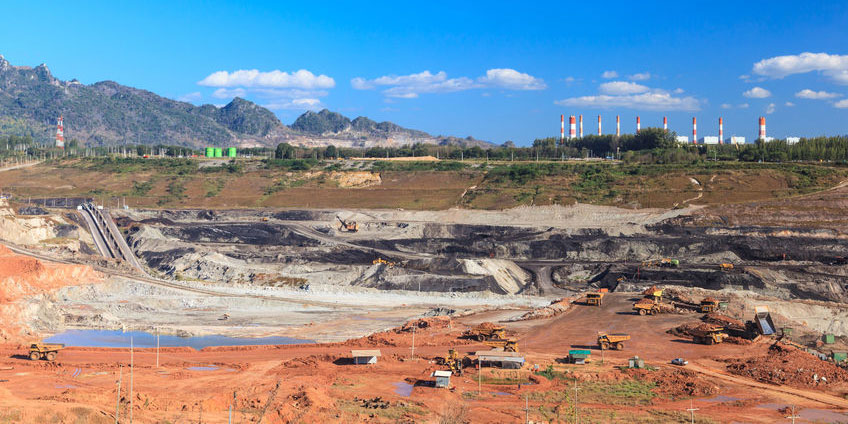The Ministry of Coal is at the forefront of a transformative initiative aimed at diversifying Coal CPSEs, thereby enhancing their sustainability and making significant contributions to India’s energy security. This initiative aligns perfectly with the Government’s broader vision of fostering a future-ready, resilient, and sustainable energy ecosystem. The Ministry of Coal has identified key areas for diversification and is broadening its scope by venturing into renewable energy sources to diversify its energy portfolio and contribute to India’s renewable energy goals.
Against the backdrop of shifting global energy paradigms and increasing environmental consciousness, the Ministry of Coal is actively promoting extensive diversification within CPSEs, establishing pit-head TPPs, solar power plants, wind mills, coal/lignite gasification plants, and critical mineral exploration. The Ministry’s guidance aims to secure sustainable operations for both CIL and NLCIL, anticipating a future coal surplus.
Renewables – Solar & Wind Power: The combined solar capacity installed by CIL, NLCIL, and SCCL is about 1700MW, with an additional 51 MW from wind mills. The coal sector aims to achieve a total renewable energy capacity of approximately 9000 MW by 2030. Coal companies are focusing on rooftops, floating as well as ground-mounted solar and wind projects, as well as developing solar parks in reclaimed mining areas.
Renewables – Pumped Storage Power: The Ministry of Coal is initiating Pump Storage Projects (PSP) in de-coaled coal mines to diversify energy sources. This aims to utilize solar energy for hydroelectricity, promoting sustainable development in the coal sector. De-coaled mines offer viable sites for PSPs due to the availability of a lower reservoir, water head, and land. CIL and NLCIL are conducting feasibility studies on pump storage projects (PSPs). CIL has identified 24 abandoned mines and other sites. Stakeholder consultations are ongoing to finalize business models like EPC and PPP, with plans for collaboration with state governments, private players, and research institutions.
Renewables – Geothermal Energy: The Ministry of Coal has initiated a ground breaking project to harness geothermal energy for power generation. This pilot project, located in the Manuguru area of SCCL Command, is based on the closed-loop Binary Organic Rankine Cycle (ORC) process technology. The aim is to establish the first indigenous 20kW pilot demonstration unit in India, utilizing geothermal fluid as a heat source. The project seeks to produce clean, reliable, and efficient electricity while standardizing and optimizing power generation costs. The ultimate goal is to ensure uninterrupted power supply for commercial viability, indigenize the process, establish a model for scaling up, and register Intellectual Property Rights (IPR) for the proof of concept.
Renewables – Green hydrogen & ammonia: The Ministry of Coal has joined hands with Ministry of New and Renewable Energy to take up projects on Green Ammonia/Hydrogen. CIL has identified surplus land parcels for feasibility study.
Coal Gasification: India has set a goal of gasifying 100 million tonnes of coal by 2030. To support this goal, a financial assistance scheme has been approved to promote Coal/Lignite Gasification Projects by Government PSUs and the Private Sector, with an allocation of ₹8500 crores for incentives towards coal gasification projects. The aim is to demonstrate the financial and technical viability of gasification projects more widely, accelerate markets for downstream products, and create an additional value chain in the economy for coal. The goal is to promote diversified and cleaner use of coal, thereby moving towards ‘Atmanirbhar Bharat’ and ensuring sustainability in the coal sector.
CIL and BHEL formally signed a joint venture agreement (JVA) for setting up an ammonium nitrate plant through surface coal gasification (SCG) technology route. The plant to come up in Lakhanpur area of Mahanadi Coalfields Limited, Odisha. Additionally, there is an ongoing Joint Venture Agreement between Coal India Limited (CIL) and Gas Authority of India Limited (GAIL), which promises to reshape India’s energy landscape. The synergy and partnership between corporate giants is a big step towards National Coal Gasification Mission which facilitates utilization of chemical properties of coal. The upcoming plants would help in securing the raw material reducing import dependency of the end products.
Pit-head TPPs: As a significant step towards forward integration for harnessing cumulative benefits of superior and efficient Super Critical TPPS for augmenting energy security. Setting up power plants at pithead is more cost-effective with efficient Super Critical technology and reduced burden for coal logistics. This decision comes as coal is projected to be surplus in the future, and Ministry aims to ensure sustainability in operations for CIL and NLCIL with setting up of new TPPs.
NLCIL has formulated plans to construct a 3X800 MW pit-head thermal power plant at Talabira in Odisha to supply 1450MW power to Tamil Nadu, 100MW to Puducherry and 400MW to Kerala. The project is expected to begin by the end of this year and likely to be completed by 2028-29.
Coal India Ltd (CIL) is also in the process to establish two pit-head thermal power plants. One, located near Amarkantak as a joint venture with the Madhya Pradesh Government. The planned capacity for this plant will be 1X660 MW. The project will be executed through a joint venture between SECL and Madhya Pradesh Power Generating Company Ltd. Mahanadi Coalfields Ltd (MCL), another subsidiary of CIL, has set up Mahanadi Basin Power Limited, as a fully owned subsidiary. MCL plans to establish a 2X800 MW thermal power plant near its Basundhara Mines. This pithead plant has received interest from different States for 4000 MW worth Power Purchase Agreements (PPAs). The projects are likely to be completed by FY30.
Additionally, NLCIL is all set to operationalize TPP at Ghatampur near Kanpur, to generate 3X660 MW power. A joint venture project between NLCIL and the Government of Uttar Pradesh, it will be supplying 1478.28MW to Uttar Pradesh and 492.72MW to the State of Assam. The project is under implementation and the first phase of this plant is expected to start generating electricity by the end of this year.
The Ministry of Coal has advised all subsidiaries of CIL to find suitable de-coaled land for establishing renewables (Solar & PSP), new pit-head TPPs, Green Ammonia/Hydrogen or coal gasification plants.
Critical Minerals: The surge in clean energy resources requires scaling up critical mineral production, especially of lithium, cobalt, copper, and rare earth elements. The Ministry of Coal intends to take up exploration and development of domestic critical minerals block as well as sourcing it from overseas. CIL has signed two Non-Disclosure Agreements (NDAs) with New South Wales (NSW) companies and are in the advanced stage. CIL is also actively seeking to mine critical minerals globally, with a focus on countries like Argentina etc. The Ministry of Coal is looking into critical minerals for enhancing India’s critical and strategic mineral supply while aligning with global fossil fuel transition goals set at COP28.
The Ministry of Coal is committed to promoting sustainable development and maximizing resources efficiency, which will contribute to reducing the carbon footprint of the coal sector. The Ministry is resolute in ensuring the efficient utilization of resources and providing a reliable power supply to the public. It is committed to fostering innovation and excellence in the coal sector, ensuring a sustainable and robust energy future for India.
*****
 Indian Industry Plus A Pratisrutiplus Suppliment
Indian Industry Plus A Pratisrutiplus Suppliment














